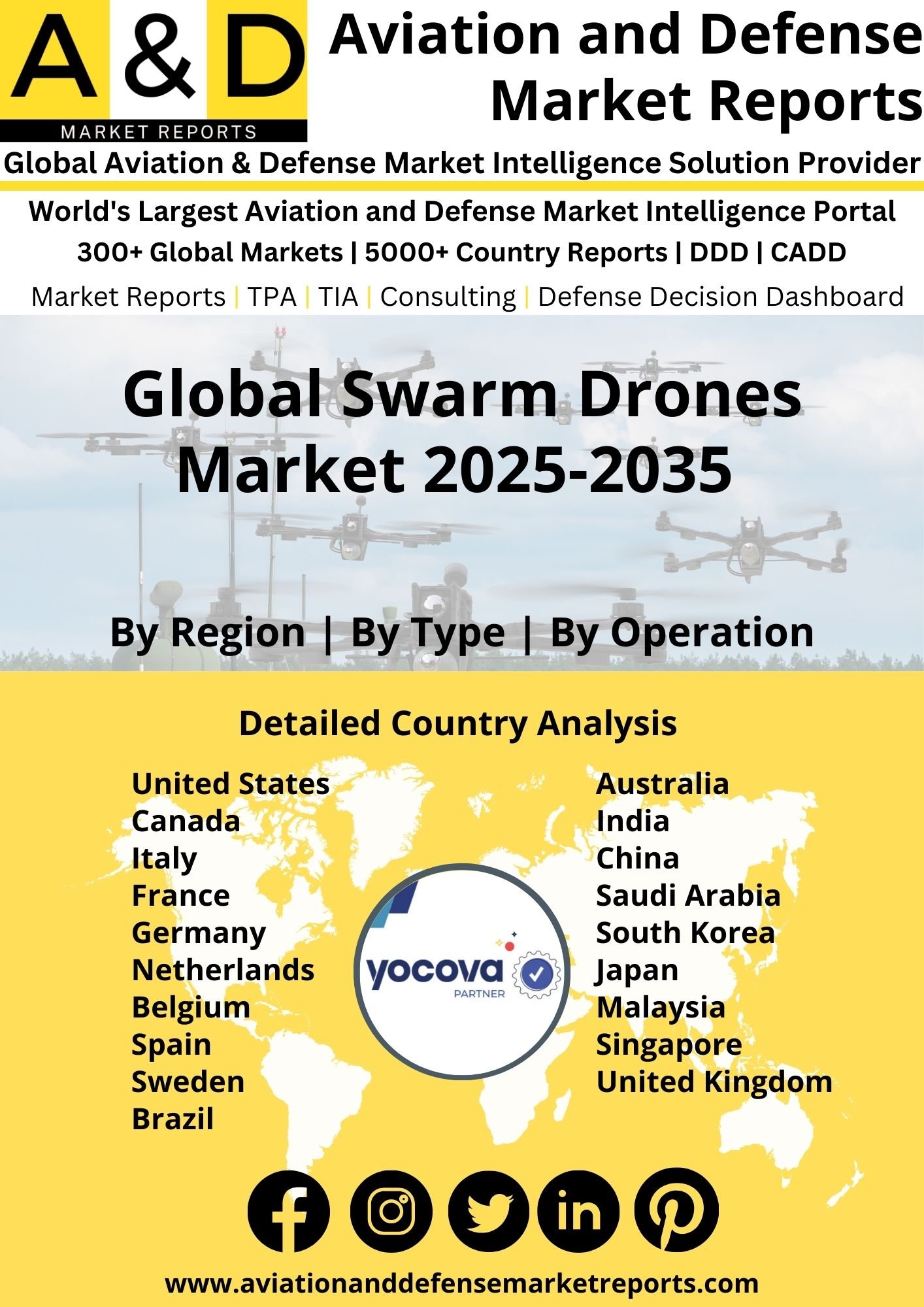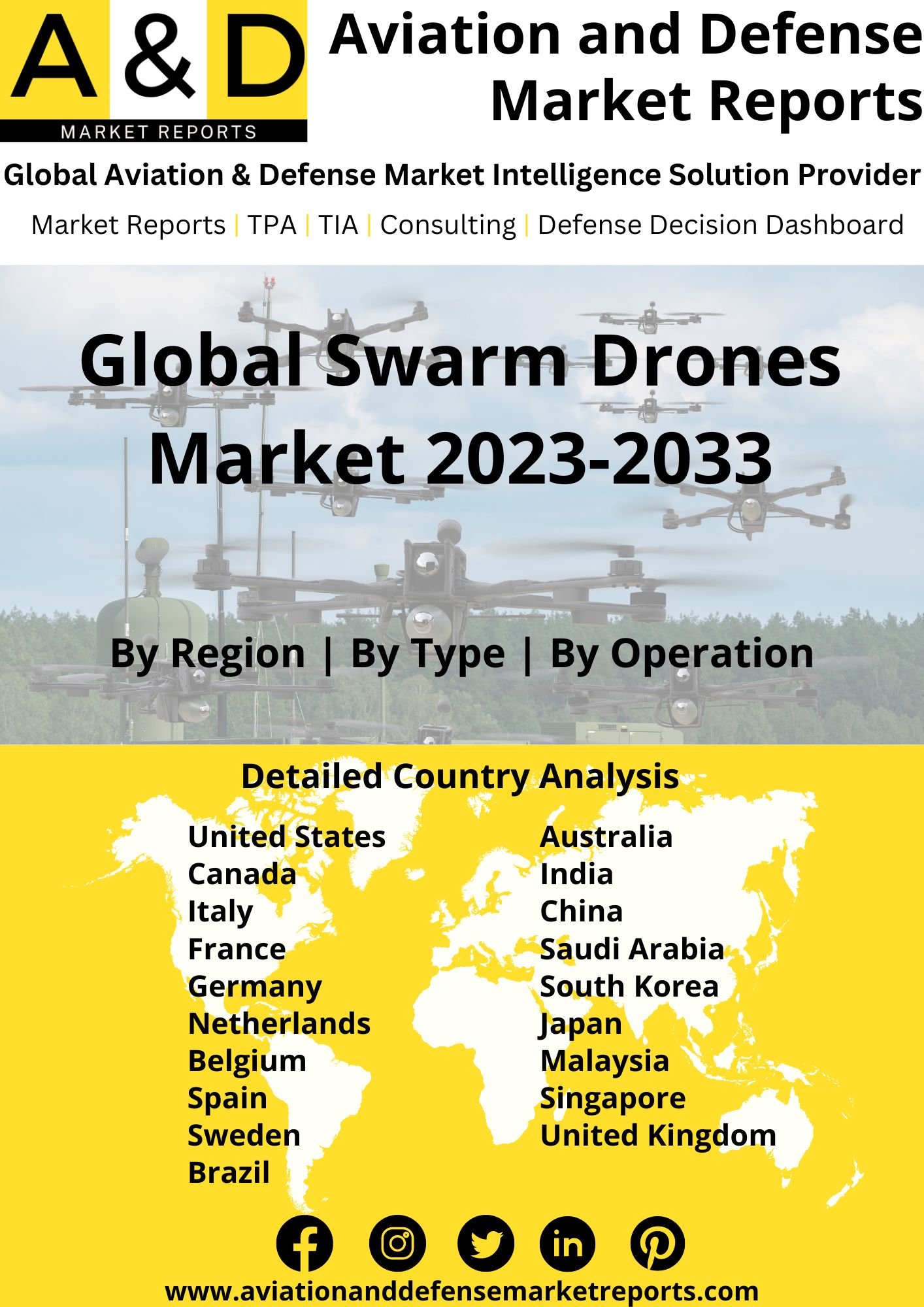Description
Swarm Drones Market
Swarm drones market, also known as drone swarms, refer to a group of small drones that operate together in a coordinated manner. These drones are often designed to mimic the behavior of social insects like bees or birds that work together as a group to achieve complex tasks. Swarm drones have gained significant interest in various fields due to their potential applications in areas such as military, agriculture, search and rescue, environmental monitoring, entertainment, and more. Swarm drones communicate with each other to maintain formation and execute tasks. This communication can be achieved through wireless protocols or other means. Unlike traditional drones that are usually controlled by a single operator, swarm drones market size often operate with decentralized control algorithms. This means that each drone makes decisions based on its observations and interactions with neighboring drones. Swarm drones can exhibit redundancy, where if one drone fails, the swarm can continue to function. This redundancy enhances the overall reliability and robustness of the swarm. Swarm systems can scale in size, allowing for increased capabilities without relying solely on larger individual drones.
Swarm drones market analysis can be programmed to divide and allocate tasks among themselves efficiently. Swarm drones could potentially be used in military operations for reconnaissance, surveillance, and other tactical purposes. They could overwhelm enemy defenses and perform complex maneuvers. Despite their potential, swarm drones also present challenges. Coordinating a large number of drones without collisions or loss of synchronization can be technically demanding. Communication protocols, power management, and safety regulations are also significant factors that need to be addressed.
The development of smaller and lighter swarm drones. Smaller and lighter swarm drones are easier to deploy and operate, making them more suitable for a wider range of applications. The increasing use of swarm drones for civilian applications. Swarm drones are being used for a variety of civilian applications, such as delivery, inspection, and search and rescue
Major factors driving Swarm Drones Market Growth
The swarm drones market was witnessing substantial growth due to advancements in drone technology, artificial intelligence, and communication systems. Swarm drones were being explored for search and rescue missions, offering the capability to cover large areas quickly and gather real-time data in emergencies. Ongoing advancements in communication protocols, AI algorithms, and drone design were enhancing the capabilities of swarm drones and reducing technical challenges.
The military and defense sector is the major driving force for the swarm drone market growth. Swarm drones are being used for a variety of military applications, such as intelligence, surveillance, and reconnaissance (ISR), target identification and tracking, and electronic warfare. The increasing demand for swarm drones in the commercial sector is also contributing to the growth of the market. Swarm drones are being used for a variety of commercial applications, such as delivery, inspection, and search and rescue.
Trends Influencing the Swarm Drones Market Size
The swarm drones market forecast was expected to continue growing as technological advancements addressed existing challenges. Innovations in communication protocols, AI algorithms, and regulatory frameworks were anticipated to drive further adoption across industries.
The integration of artificial intelligence (AI) and machine learning into underwater robotics is enabling more autonomous decision-making and adaptive behavior in response to changing situations.
Swarm Drones Market Forecast & Dynamics
The diverse range of applications for swarm drones, including agriculture, disaster management, surveillance, entertainment, and more, was driving market expansion.
Swarm Drones Market Analysis for Recent Developments
The Indian Army has begun receiving its first heterogeneous swarm Unmanned Aerial Vehicle (UAV) system for use on the battlefield. Given that the majority of swarm drone research has yet to be operationalized globally, this delivery may represent the first high density swarming UAS (Unmanned Aerial System) introduction for military uses in history. The swarming systems, which were purchased under emergency procurement (EP), demonstrate how India has assumed a leading position in the world by implementing cutting-edge indigenous technology.
The utilization of global swarm drones market report has reached unprecedented levels, transforming various industries and redefining the capabilities of unmanned aerial systems. These interconnected fleets of drones, operating collaboratively through advanced communication and artificial intelligence, have demonstrated remarkable efficiency in tasks ranging from surveillance to disaster response. Key advancements include enhanced swarm coordination algorithms, enabling thousands of drones to move in synchronized patterns with unprecedented precision. This has proven invaluable in applications such as agricultural monitoring, where swarm drones efficiently survey vast fields for crop health and yield estimation.
Furthermore, the deployment of global swarm drones has revolutionized emergency response efforts. In disaster-stricken areas, these drones swiftly gather real-time data, assess damage, and even facilitate search and rescue missions. The speed and scale at which swarm drones can operate significantly enhance the effectiveness of humanitarian interventions. However, the proliferation of swarm drone technology also raises ethical and regulatory concerns, prompting governments and international organizations to develop frameworks ensuring responsible and secure deployment. As global swarm drone capabilities continue to evolve, their impact on industries and society at large is poised to grow, with ongoing efforts to balance innovation with ethical considerations.





